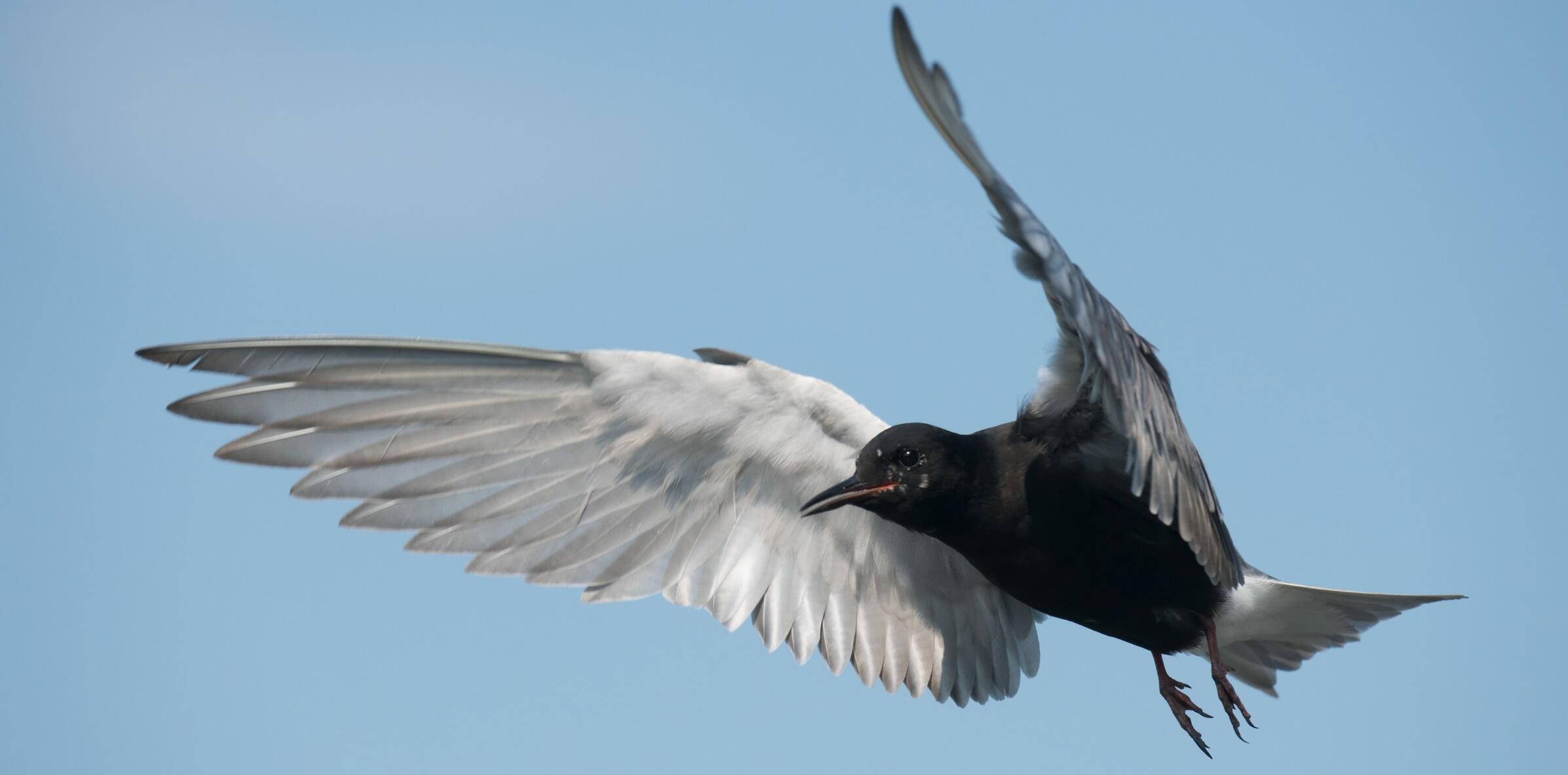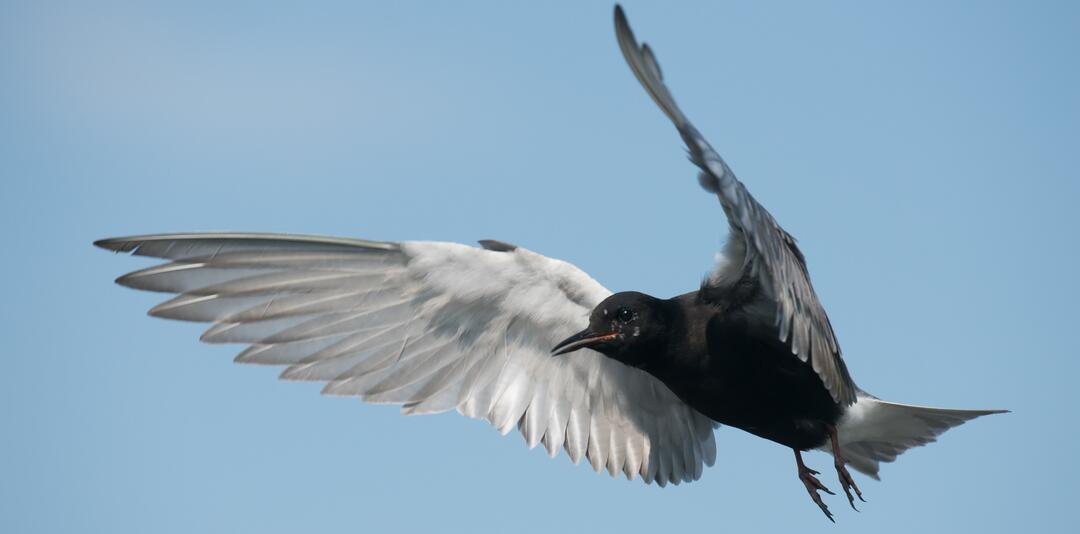Restoration of Marsh Habitat at Lakeview Wildlife Management Area Will Benefit Northern Pike and Support At-risk Bird Species Like the State-endangered Black Tern, American Black Duck, and Sora.
Improved Recreational Opportunities Including Waterfowl Hunting, Bird Watching, Sport Fishing, and Kayaking
NEW YORK (May 17, 2022) – A significant fish and wildlife habitat restoration project has launched to restore 180 acres of coastal marsh within the 3,461-acre Lakeview Wildlife Management Area (WMA) on Lake Ontario, in the town of Ellisburg, Jefferson County. The restoration project will create better access to shallow water areas for fish spawning and nursery habitat, as well as new breeding habitat for declining bird species. This work will benefit Northern Pike, as well as marsh birds, waterfowl, and state-endangered Black Terns, which historically nested in the area. The public will also enjoy improved recreational opportunities in the area, including waterfowl hunting, bird watching, sport fishing, and kayaking.
The habitat at Lakeview WMA has become less diverse over time, with increasingly dense cattail stands and encroachment of invasive species. The area contains five large coastal ponds connected by numerous natural and manmade channels, which provide only limited areas for fish and birds to spawn and breed.
The project aims to develop more hemi-marsh habitat (roughly equal parts open water and aquatic plant areas) which is crucial for breeding birds and fish. Techniques will include re-creating meandering waterways, pools, and ponds, and controlling non-native invasive vegetation. These restoration methods have proven successful on Lake Ontario and other Great Lakes, and post-construction monitoring has shown increases in natural reproduction and young fish fry using the newly restored sites.
Monitoring will continue post-restoration, as will control of the invasive species within the entire WMA. Ultimately, the data collected could help to develop long-term adaptive management strategies for habitat restoration in coastal wetlands across Lake Ontario and beyond.
Before ground is officially broken this winter, project partners including the National Audubon Society, Ducks Unlimited, the National Oceanic and Atmospheric Administration (NOAA), the Great Lakes Commission (GLC), and the New York Department of Environmental Conservation (DEC) will conduct baseline surveys of birds, fish, water levels, and vegetation.
“The Lakeview Wildlife Management Area habitat restoration project will expand on similar efforts completed previously and continue the work of DEC and our partners to restore habitats to natural conditions for the benefit of the fish and wildlife species that call Lake Ontario coastal marshes home,” said Randall Young, Regional Director for New York State Department of Environmental Conservation Region 6.
“There are few coastal marshes along Lake Ontario as special as those found at Lakeview Wildlife Management Area. These expansive wetlands are critical habitat for many birds, fish, and other wildlife who have limited places to thrive. Restoring the diversity and quality of the marsh habitat will result in improved breeding and foraging opportunities for game and non-game species alike. The project is a win for wildlife, and a win for people who value this incredible resource,” said Andy Hinickle, Senior Manager of Wetland Conservation for Audubon Great Lakes.
“The Lakeview Wildlife Management project will restore a vital coastal wetland ecosystem along Lake Ontario by improving fish passage, addressing invasive plant species, and providing increased habitat,” said Todd L. Ambs, chair of the Great Lakes Commission (GLC). “This adds to the growing list of restoration projects being collaboratively managed by the GLC across the region. We look forward to joining our partner organizations in kicking off this important work this summer.”
"By restoring coastal wetlands along Lake Ontario, the Lakeview Wildlife Management Area project will not only benefit important Great Lakes fish like northern pike, it will also support recreational opportunities for local anglers and other outdoor enthusiasts," said Carrie Selberg Robinson, director of the NOAA Fisheries Office of Habitat Conservation. "This project is an important piece of NOAA's long-standing efforts to restore habitat in the Great Lakes region, and we're excited to see it underway."
“This coastal marsh is highly important for a wide range of fish and wildlife, especially as an important migration corridor for waterfowl. This large effort will help enhance it for years to come. Not only will this enhancement benefit wildlife, but the newly enhanced land will improve public recreational opportunities for people. This effort is an example of strong cooperation among numerous stakeholders to achieve important habitat improvements,” said Ed Farley, Regional Biologist for Ducks Unlimited.
Funding for this project is provided by the Great Lakes Restoration Initiative (GLRI) and U.S. Environmental Protection Agency through the National Oceanic and Atmospheric Administration (NOAA)/Great Lakes Commission (GLC).
Learn more about our work to protect birds in our region and explore Audubon’s cohesive strategy, Audubon’s Vision: Restoring the Great Lakes for Birds and People.
Media Contact: Sharon Bruce, sharon.bruce@audubon.org
How you can help, right now
Donate to Audubon
Help secure the future for birds at risk from climate change, habitat loss and other threats. Your support will power our science, education, advocacy and on-the-ground conservation efforts.





